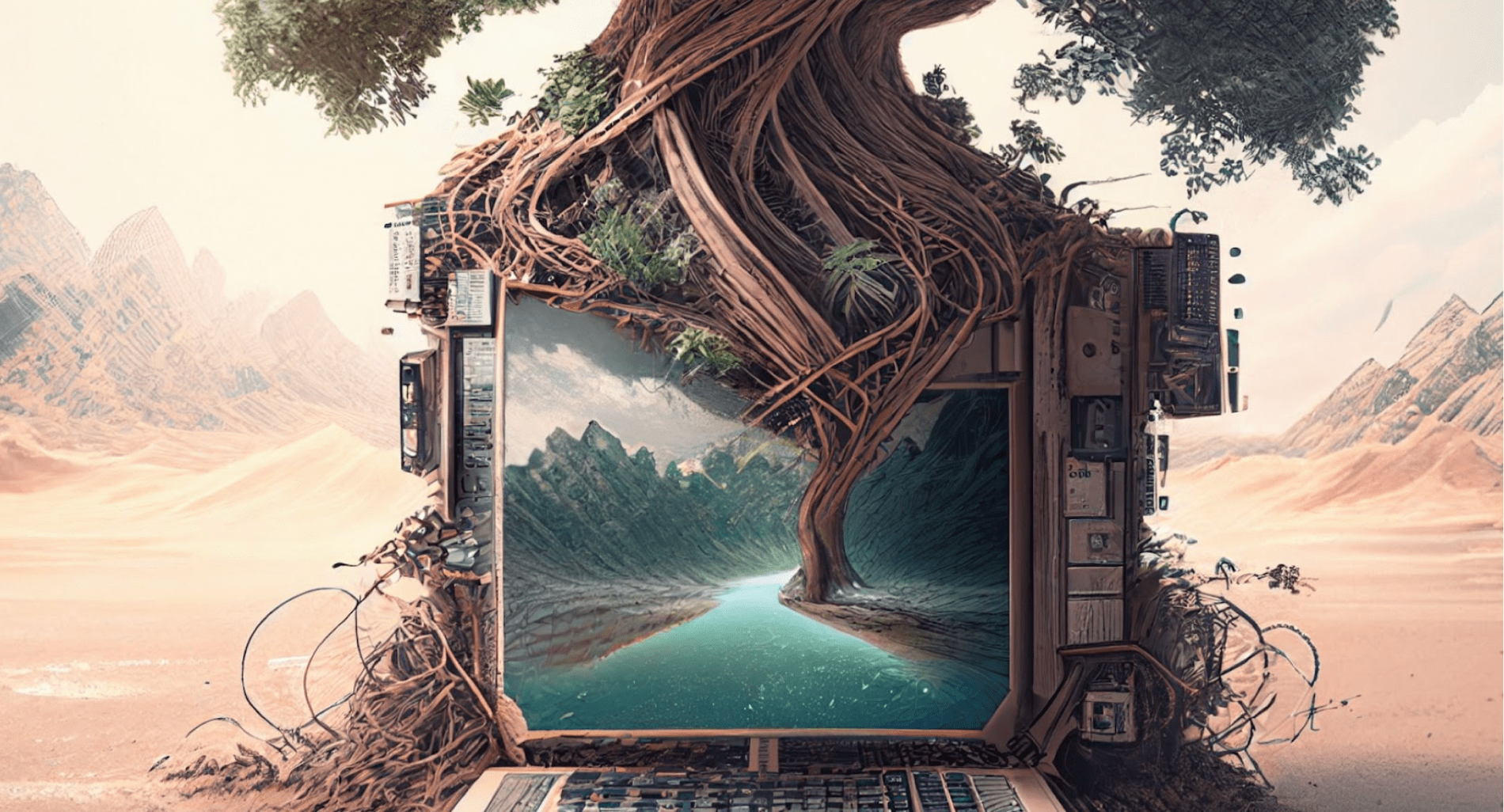How do we envision design in the next years? Will the role of creatives be surpassed by machine-generated content and products? What are the steps toward developing an industry that intrinsically contributes with solutions to global challenges? In this article, Roberto Cabezas reviews 5 superpowers to reimagine digital design from a better understanding of science and hybrid creative processes.
“Only describe, don’t explain.”– Ludwig Wittgenstein
Roberto Cabezas is a transmedia software developer, researcher, and educator, currently living and working in Mexico City. He is the Chair Creative Computing at CENTRO, where his work, research, and lectures focus on: applied artificial intelligence, data visualization, affective and cognitive computing, algorithmic creation, procedural animation, computational simulation, and philosophy of technology. He obtained a Ph.D. in Music Technology and graduated with honors from the National Autonomous University of Mexico (UNAM).
As part of his work, he creates and develops software tools for music composition, animation, immersive design, and interactive audiovisual performance to explore new ideas on hybrid computational models for human-machine cooperation and social accountability for technology development.
As far as today, there is enough evidence that shows the importance of design as a fundamental part of the growth and development of different industries, mainly, those that involve intangibles as part of their experience or products, such as software companies. Nevertheless, as stated by Gui Bonsiepe in the ’90s, “The relationship between science and design is potentially conflictive”, for example, priorities could differ during a project, where scientists may want to prioritize accuracy, rigor and quantitative thinking over aesthetics, while designers may want to prioritize user experience and aesthetics over accuracy. The struggle is more focused on the social dynamics between creators and researchers than the disciplines themselves, and even though design is interdisciplinary by nature, sometimes it’s difficult to find the sweet spot needed for a rhizomatic creative and innovative hybrid process.
One possible (non-linear) path to make science, technology, and design cohabit is considering Bonsiepe’s proposed objectives for each of the areas:
- Science is the production of knowledge and it supports the production of cognitive innovation
- Technology supports the production of instrumental innovation, it consists of the production of know-how
- Design activity is neither the production of knowledge nor the production of know-how, but the articulation of the interface between artifact and user
According to that framework, design has a crucial role in the creative process or innovation chain, as it has to put humans and technological devices together, so, the limits of our scientific and technological knowledge and comprehension will set the boundaries of how we create meaningful experiences, shortening or expanding the horizons of what’s possible. We need balance in our creative processes not to only perpetuate past data, but to explore new frontiers, a fuzzy and flexible approach to combine the proper dose of science, technology and design in what we do.
This article proposes five different areas or superpowers to expand, evolve, and articulate design methodologies or processes integrating and combining deeper computational and mathematical perspectives.
“Design has a crucial role in the creative process or innovation chain, as it has to put humans and technological devices together, so, the limits of our scientific and technological knowledge and comprehension, will set the boundaries of how we create meaningful experiences, shortening or expanding the horizons of what’s possible” — Roberto Cabezas
Five superpowers to reimagine digital design
Design is an ever-evolving field that is constantly pushing the boundaries of what is possible. By embracing these knowledge areas, designers can become bridge builders between science, technology and design, creating new and exciting possibilities for the future. The following selection has a balance between quantitative and qualitative techniques to expand and evolve digital design or creative processes.
Procedural thinking is a type of thinking that involves breaking down a problem or task into a series of steps or procedures that can be followed in a specific order to achieve a desired outcome. It is often associated with problem-solving and decision-making, and is often used in fields such as computer programming, engineering, and mathematics. Procedural thinking is intrinsic to digital design as it potentiates the expressiveness of a computerized world, taking advantage of five main principles: numerical representation, modularity, automation, variability and transcoding. These principles enable rethinking new architectures for procedures and make them adequate for the digital realm.
Statistical thinking and basic data analytics. Statistics is the branch of mathematics that deals with the collection, analysis, interpretation, presentation, visualization and organization of data. It provides tools and techniques for making inferences about a population based on a sample of data, and for making decisions in the face of uncertainty. Statistics provides the mathematical framework and tools for analyzing data, while data analysis is the process of using those tools to extract insights from data. The relationship between statistics, data analysis and design, is that statistics and data analysis help inform the design process by providing a deeper understanding of the problem or opportunity at hand. It provides the data-driven insights that are necessary to make informed decisions. In turn, design can be used to create new data collection methodologies, by involving user feedback and testing new ideas, that will lead to a more insightful data analysis, sometimes design is related to the process of generating synthetic data. On this subject, David Spiegelhalter gives a very powerful introduction to statistical thinking in his book The Art of Statistics: How to Learn from Data.
Database design: is the process of creating a structured plan for how data will be stored, organized, and accessed in a database, text file or spreadsheet. It involves creating a schema, which is a blueprint for the structure of the data, including the tables, fields, relationships, and constraints that define the data. The ability to define and describe a mental model and its representation through a database, will enhance how designers communicate findings and contextualize the world aided with a computational perspective. Historically, the way databases are modeled is totally related to visual thinking techniques. Entity-relationship diagrams are a good example of visual methodologies that could generate better and more transparent information when understood from a design perspective.
Network science: A lot has been said about the complexity of design processes and how we need new tools to describe them. Network science is an interdisciplinary field that seeks to understand the structure, dynamics, and function of complex systems that can be represented as networks. These networks can take many forms, such as social networks, transportation networks, biological networks, and more. In design, the focus is often on creating solutions that optimize a particular aspect of a system, such as usability, functionality, or aesthetics. In network science, the focus is on understanding the structure and function of the system itself. Albert-László Barabási has a nice introduction book website and book for you to begin, and Graph Commons is an excellent tool to start experimenting with.
Computer simulation is the use of a computer to represent the dynamic responses of one system by the behavior of another system modeled after it. A simulation uses a mathematical description, or model, of a real system in the form of a computer program. Computer simulations are used to study the dynamic behavior of objects or systems in response to conditions that cannot be easily or safely applied in real life. Creative Approach Design looks to generate abstract models of the world, and the safest place to test those models is inside a computer program. Unity agents could be a nice toolkit for experimentation, also symbolic manipulation and linguistics could enhance the possibilities of computer simulation and expression.
These superpowers could expand and evolve the interconnections between science, technology and design, pushing forward the boundaries of creativity within a framework that keeps the balance between what we can measure, and what we can feel. Design is not about predicting the next technology, it has to do with the way we change life on a fundamental level, and we do that by contextualizing the world within our creative systems to blow our minds with the unimaginable.
Learn more at Design Matters Mexico 23
Roberto will give a talk at the design conference Design Matters Mexico 23, which will take place in Mexico City & Online, on Jan 25–26, 2023. The talk, titled “I dream of hybrids: the last move”, will explore how digital design can reset value into imagination and creativity in our industries and daily life. Get your ticket here.
Follow Roberto on LinkedIn, and Instagram. Learn more about CENTRO and follow them on Twitter, Instagram, or visit their website.




